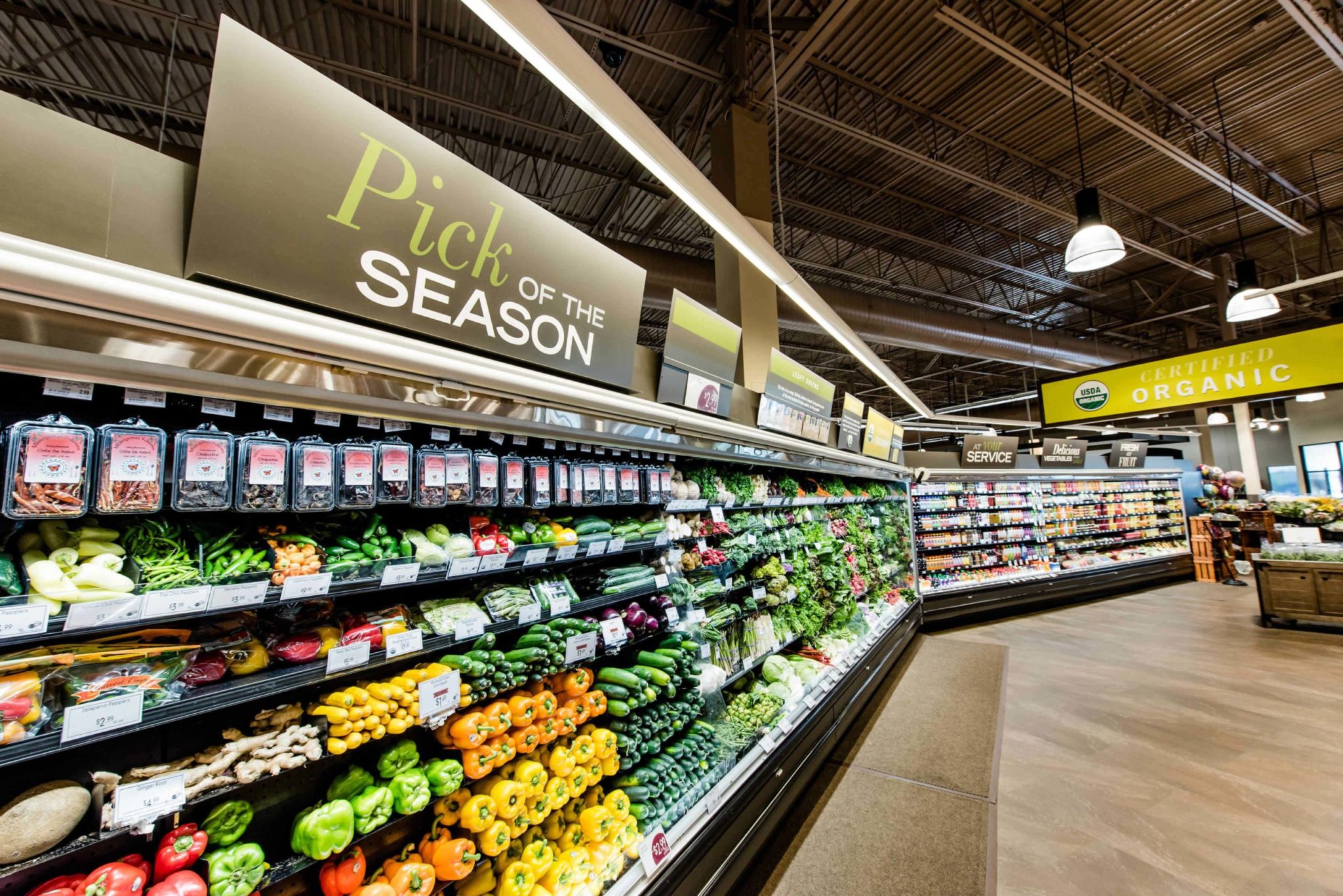At Shea, we pride ourselves on staying on top of what’s happening in design news. It helps us keep tabs on what’s fresh, inspiring, and happening in the world—and we make a few headlines of our own, too. Here are some recent articles delving into design, experience, and what’s buzzing in our community:
“Trends Forecast 2021: The Year Ahead in Retail” – VMSD:
VMSD dives into what’s ahead for retail in 2021, after all predictions from the previous year have been shredded. Experts suggest that more mixed-use spaces, with retail centers and an adjoining residential component, will continue to gain momentum in an ongoing effort to “de-mall the mall.” Authenticity will continue to reign, with multiple experiences under one roof that take guests to a completely different life. And, of course, retail will be catering to cautious shoppers wary of COVID-19 with safety measures while still looking forward.
“Lake Minnetonka Magazine Sets The Grocer’s Table” – Shea:
A Lake Minnetonka Magazine cover piece delving into the details of The Grocer’s Table
“U.S. Restaurant Openings Quicken, Hinting at Rebound Taking Hold” – Bloomberg:
Though 2020 was tough for restaurants, new openings had ticked up by the end of the year—by the last quarter, the rate of openings was down just 4% from previous years, and down only 16% over the whole year, according to data collected in a Yelp study. The data shows that local economies may be on the road to recovery, with recent openings boasting more robust outdoor spaces, fewer tables, and efficient designs. This piece looks at restaurants in comparison to other local businesses and services, from home services to retail to fitness, as well as the rates of reopenings and how those have affected business growth.
“Ghost Kitchens Find a Home in Empty Hotels” – New York Times:
With hotels and restaurants both on the rails during the pandemic, the troubled industries have joined together in a unique venture: ghost kitchens. Demand for the facilities, which produce food only for delivery or takeout, has been up throughout COVID, and with occupancy down in hotels, they’ve been looking to repurpose their spaces. Ghost kitchens based in hotels not only serve the concept cooking there and open up the idea of a “restaurant” to more operators, but also expand the hotel’s food offerings. Utilizing the dormant real estate in this way has potential for longevity as long as partnerships work smoothly.
“Furniture’s Role in Workspace Well-Being” – Work Design:
With the return to offices, workplaces are more focused than ever on the well-being of their employees—both physical and mental. This piece looks at the factor of furniture in this endeavor, breaking down five major roles: encouraging connectivity (with space planning and guided traffic flow), emphasizing green and outdoor spaces (with seating areas planned specifically to highlight nature), providing flexible schedules (with furniture that works for different company roles and schedules), offering a variety of workstation types (with more adaptable features like adjustable-height and storage), and creating a home-like atmosphere in the workplace (taking “resimercial” one step further).
“Designing for Flexibility Now and Later” – Restaurant Development + Design:
Restaurants are particularly interested in designing with flexibility in mind right now. In quick-service, some restaurants have been designing second makelines specifically for takeout and delivery orders—and it’s a trend that’s being extrapolated beyond chain restaurants to the design of independents. Specific stations for carryout need to be incorporated into the design carefully, and operators need to invest in technology that will make off-premises orders of as high quality as possible. For fine dining spots, meal kits have been a game-changer, but they must be thoughtfully created and well-branded. Moving forward, operational changes will be focused on productivity, efficiency, and having multifaceted facilities—dining room spaces that blend the indoor/outdoor lines, and a mix of all different dining categories (QSR, fine dining, casual, and fast casual).
“Small Formats’ Big Future in Retail” – Progressive Grocer:
Retail footprints have been decreasing in size over the last decade—the average grocery store in 38,000 square feet, and small-formats range between 12,000 and 25,000. Smaller footprints mean smaller costs and greater profitability, since grocery real estate is nearly double the cost of conventional retail. Benefits of small-format stores include less labor, more efficiency, more focus on customer needs, and the chance to target the geography and demographics to serve urban markets. Stores must continue to offer assortment, value, and convenience, while introducing new features like frictionless checkout, options for buying online/picking up curbside, and improved wayfinding. Finally, stores are beginning to consider smarter equipment, energy efficiency, and more compact equipment, along with better e-commerce integration, to help small stores thrive.
“Petite Leon Scores Raves in South Minneapolis” – Shea:
Link through Shea to the MSP magazine piece that gives the background on Petite Leon, as well as a glowing review of the space and food
“How COVID Changed Restaurant Design Forever” – Food & Wine:
Food & Wine looks at the lasting effects of COVID-19 on restaurant design, detailing which are passing trends and which will stick around long-term. When restaurants first reopened, style took a back seat, but it’s time to think about form as well as functionality again—with some new considerations. Plenty of space to move in the layout, an indoor/outdoor style, and proactivity in building are a start. Booths and sectioned-off dining zones will make guests feel safe and protected, and signage and wayfinding about safety guidelines and cleaning processes will become opportunities to connect with guests and further brand awareness.
“8 Tips for Rebranding Your Company Post-COVID-19” – Fast Company:
More than just a listicle, this piece looks at why companies are looking to rebrand after the events of 2020, as they acknowledge the damage that was caused by the pandemic and the shifts that they need to make to reposition themselves for a (hopefully) long future. With consumers looking for value, availability, and convenience more than ever, even the most brand-loyal shoppers and diners are willing to shift allegiances, and brands with a fresh face emphasizing transparency and authenticity will have the edge. Fast Company discusses how to approach a company’s rebrand and when to stick with the original brand foundation that’s been built.
February 12, 2021
Shea Links: February

